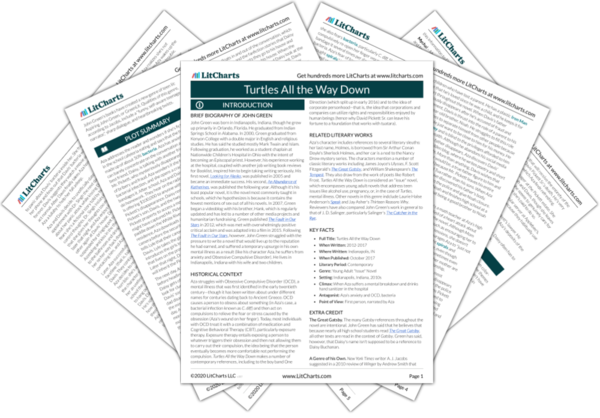Aza still takes active steps to remember and grieve for her dad, even though he died many years ago. She also continues to hold up childhood as a time when life and existing were easy, which suggests that she's not enthralled with the business of growing up, coming of age, and formulating her adult identity. When the girls separate on the island, it shows that they can be independent while having a shared experience. However, when Daisy brings up the birthday party, it shows that they're more connected than not.
